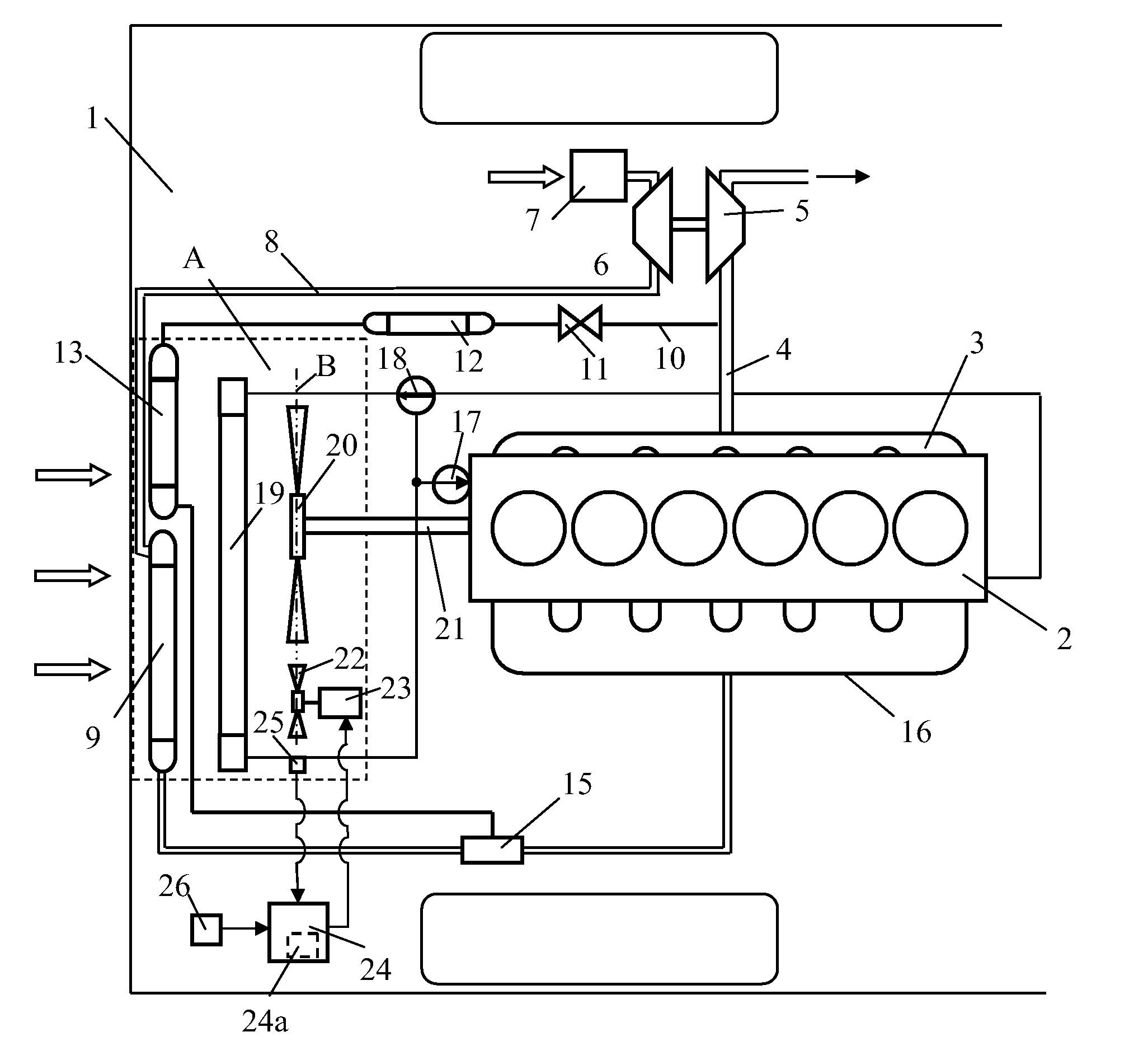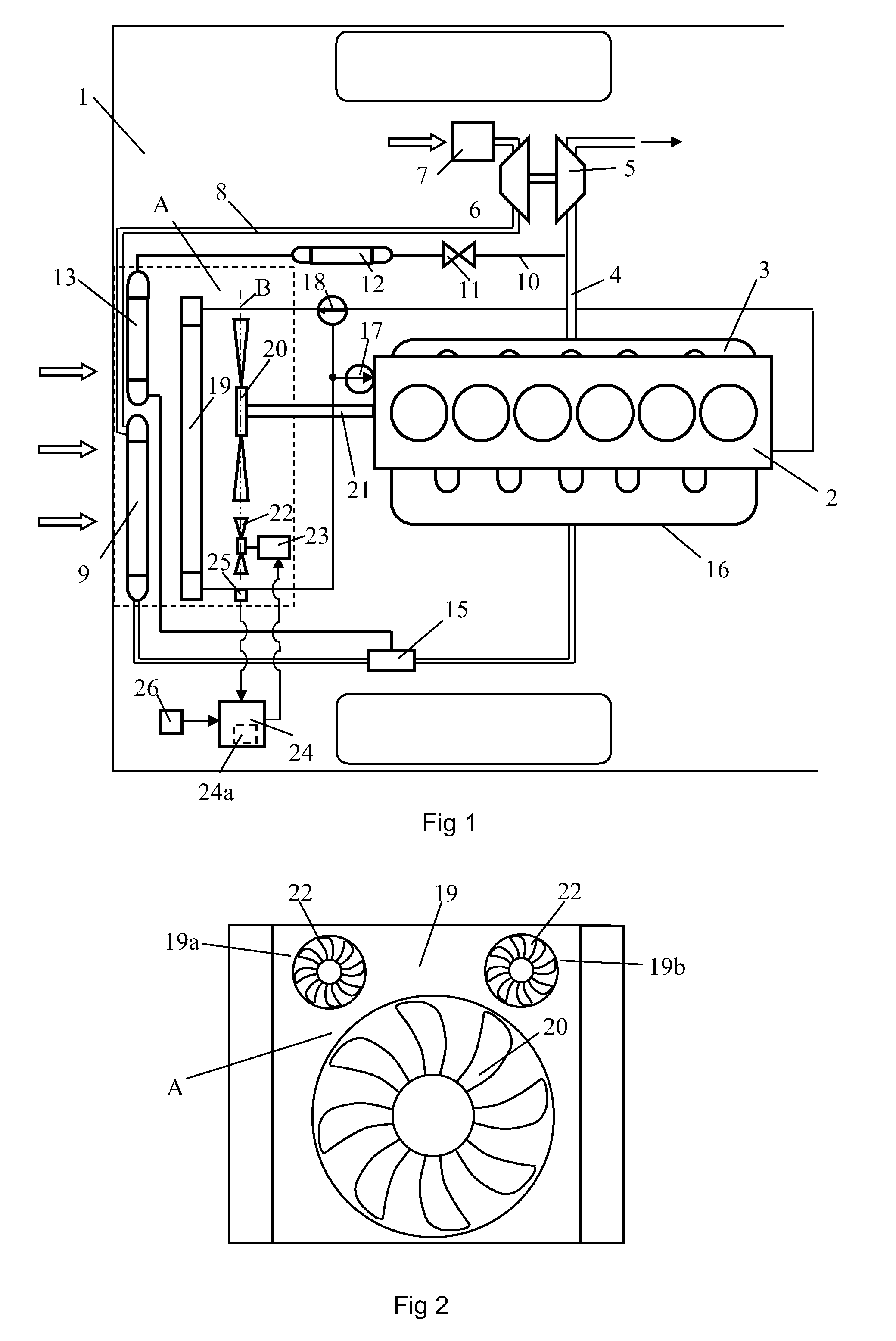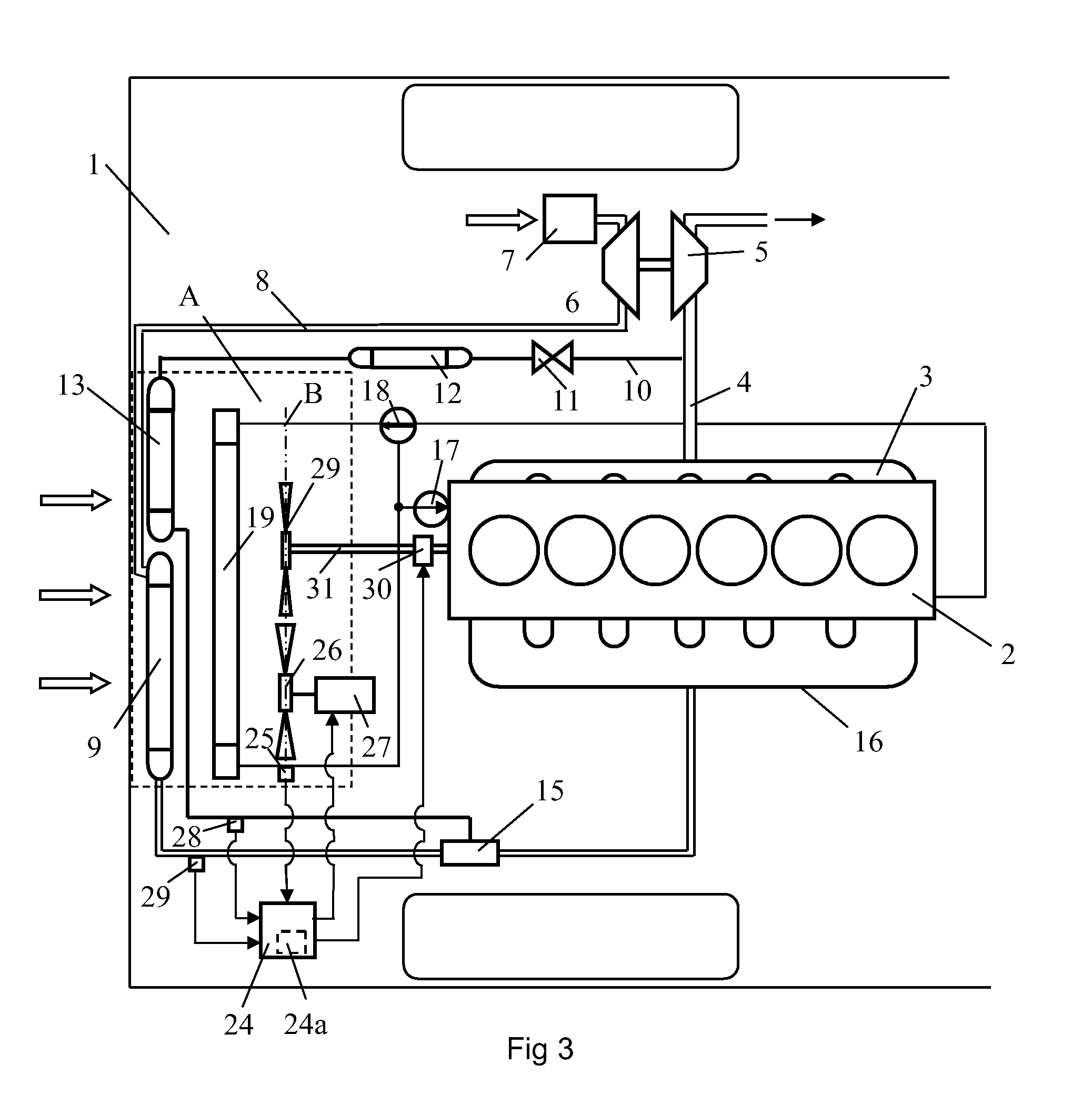Cooling fan arrangement at a vehicle
a technology for radiator fans and vehicles, which is applied in the direction of mechanical equipment, machines/engines, transportation and packaging, etc., can solve the problems that the air flow generated by the first radiator fan is not sufficient to provide the necessary achieve increase the effect of forced air flow and uniform cooling of the medium
- Summary
- Abstract
- Description
- Claims
- Application Information
AI Technical Summary
Benefits of technology
Problems solved by technology
Method used
Image
Examples
Embodiment Construction
[0016]FIG. 1 depicts a vehicle 1 powered by a supercharged combustion engine 2. The vehicle 1 may be a heavy vehicle powered by a supercharged diesel engine. The exhaust gases from the cylinders of the combustion engine 2 are led via an exhaust manifold 3 to an exhaust line 4. The exhaust gases in the exhaust line 4, which will be at above atmospheric pressure, are led to a turbine 5 of a turbo unit. The turbine 5 is thereby provided with driving force which is transmitted, via a connection, to a compressor 6. The compressor 6 thereupon compresses air which is led via an air filter 7 into an inlet line 8. A charge air cooler 9 is arranged in the inlet line 8. The purpose of the charge air cooler 9 is to cool the compressed air before it is led to the combustion engine 2.
[0017]The combustion engine 2 is provided with an EGR (Exhaust Gas Recirculation) system for recirculation of exhaust gases. Adding exhaust gases to the compressed air which is led to the engine's cylinders lowers th...
PUM
 Login to View More
Login to View More Abstract
Description
Claims
Application Information
 Login to View More
Login to View More - R&D
- Intellectual Property
- Life Sciences
- Materials
- Tech Scout
- Unparalleled Data Quality
- Higher Quality Content
- 60% Fewer Hallucinations
Browse by: Latest US Patents, China's latest patents, Technical Efficacy Thesaurus, Application Domain, Technology Topic, Popular Technical Reports.
© 2025 PatSnap. All rights reserved.Legal|Privacy policy|Modern Slavery Act Transparency Statement|Sitemap|About US| Contact US: help@patsnap.com



